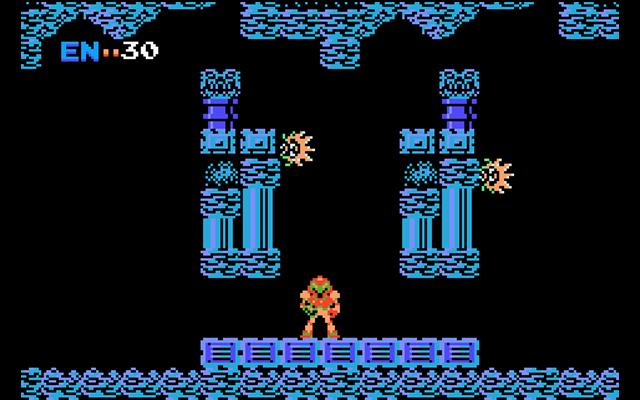Metroid: Embark on an Epic Quest Through the Depths of Space

In 1986, Nintendo unleashed Metroid upon the gaming world, forever altering the landscape of the action-adventure genre. This game not only redefined how stories could be told in video games but also set a new benchmark for immersive exploration and non-linear gameplay. With its atmospheric setting, groundbreaking mechanics, and an iconic protagonist, Metroid captivated players and laid the groundwork for one of the most enduring franchises in gaming history. The story follows the fearless bounty hunter Samus Aran as she embarks on a perilous mission to defeat the nefarious Space Pirates and eradicate the parasitic Metroids from the planet Zebes.
Samus Aran: The Iconic Protagonist
Metroid introduces players to Samus Aran, one of gaming’s first and most iconic female protagonists. Her identity, cleverly concealed until the game’s conclusion, adds a layer of mystery and intrigue that was revolutionary at the time. Tasked by the Galactic Federation, Samus must infiltrate the Space Pirate base on Zebes and thwart their plans to harness the power of the Metroids for galactic domination. Armed with her powerful Power Suit, she navigates the treacherous caverns of Zebes, battling alien creatures and uncovering hidden secrets. Samus’s journey is not just one of combat but also of discovery, as she delves deeper into the heart of the Space Pirate stronghold.
Pioneering Gameplay: The Birth of a Genre
The gameplay of Metroid is what truly set it apart from other titles of its time. Unlike many linear games of the era, Metroid introduced an open-ended exploration system that encouraged players to backtrack and revisit previously inaccessible areas as they acquired new abilities and weapons. This design philosophy laid the foundation for what would later be known as the “Metroidvania” genre, characterized by its blend of action, platforming, and puzzle-solving elements.
Players control Samus as she explores the labyrinthine corridors of Zebes, encountering a variety of enemies and environmental challenges. The game’s non-linear design creates a sense of adventure and discovery, urging players to find upgrades such as the Morph Ball, Ice Beam, and Varia Suit to advance. Each of these power-ups not only enhances Samus’s combat abilities but also unlocks new areas, allowing players to explore deeper into the planet’s complex ecosystem. The tight controls and responsive mechanics ensure that every movement feels precise, making the act of exploration both challenging and deeply satisfying.
Atmosphere and Immersion: A World Like No Other
One of Metroid’s most significant achievements is its atmospheric design, which was groundbreaking for its time. Despite the limited graphical capabilities of the NES, the game’s visuals effectively convey the eerie and hostile environment of Zebes. Each area, from the desolate wastelands of Brinstar to the fiery depths of Norfair, is distinct in its look and feel, creating a sense of place that draws players into the game’s world.
This immersion is further enhanced by Metroid’s haunting soundtrack, composed by Hirokazu Tanaka. The music, characterized by eerie melodies and ambient sounds, perfectly complements the visual design, enhancing the feeling of isolation and danger that pervades the game. The combination of these elements makes Metroid a deeply immersive experience, one that stays with players long after they have completed the game.
Boss Battles: A Test of Skill and Strategy
Metroid is not just about exploration; it also features several challenging boss battles that test players’ skills and resourcefulness. Each boss, from the monstrous Kraid to the fearsome Ridley, requires a unique strategy to defeat, pushing players to use all the abilities they have acquired throughout their journey. The final battle against Mother Brain is a climactic showdown that serves as the ultimate test of the player’s mastery of the game’s mechanics, providing a fitting conclusion to Samus’s mission.
The Legacy of Metroid: A Franchise Born
The success of the original Metroid was the catalyst for an entire franchise, spawning numerous sequels and spin-offs that expanded on the gameplay and story. Metroid II: Return of Samus on the Game Boy continued the story, while Super Metroid on the SNES perfected the formula with richer graphics, more intricate level design, and a deeper narrative. The series made a successful transition to 3D with the Metroid Prime trilogy, which retained the core elements of exploration and discovery while adding a new layer of immersion through its first-person perspective.
Influence on Modern Gaming: The Birth of “Metroidvania”
The influence of Metroid extends far beyond its own series. The game’s non-linear exploration and progression system has inspired countless modern titles, giving rise to the “Metroidvania” genre—a portmanteau of Metroid and Castlevania. Games in this genre, such as Hollow Knight and Ori and the Blind Forest, owe much of their design philosophy to the pioneering work done by Metroid. The term itself is a testament to the lasting impact of Metroid on the gaming industry.
Revisiting Metroid: A Timeless Experience
Even decades after its release, Metroid remains a seminal work in the gaming world. Its combination of innovative gameplay, atmospheric design, and memorable music continues to captivate new generations of players. Modern re-releases and emulations have introduced Metroid to audiences who may not have experienced it on the original NES, ensuring that its legacy endures.
For those who have never played the original, Metroid offers a challenging yet rewarding experience that serves as a masterclass in game design. While the game’s difficulty and lack of in-game guidance might be daunting to some, the sense of accomplishment that comes from overcoming these challenges is unparalleled. The game’s influence on the industry is immeasurable, and its place in the pantheon of great video games is well deserved.
Conclusion: A Journey Into the Unknown
Metroid is a pioneering sci-fi adventure that redefined what an action-adventure game could be, offering players a richly detailed world to explore and conquer. As Samus Aran, players experience the thrill of discovery, the tension of survival, and the satisfaction of triumph against overwhelming odds. Whether you’re a veteran of the series or a newcomer looking to explore its roots, Metroid remains a must-play experience that continues to inspire and challenge players. As one of the most influential titles in gaming history, Metroid is not just a product of its time but a timeless classic that will continue to captivate audiences for years to come.









